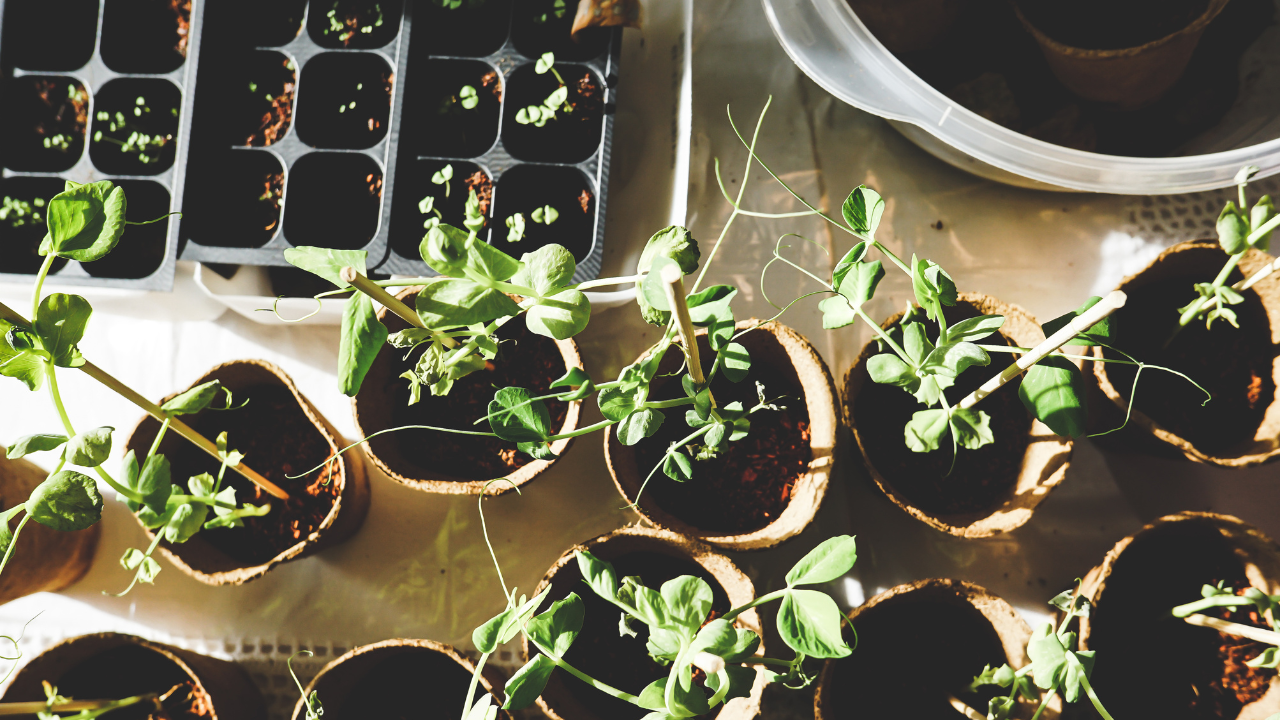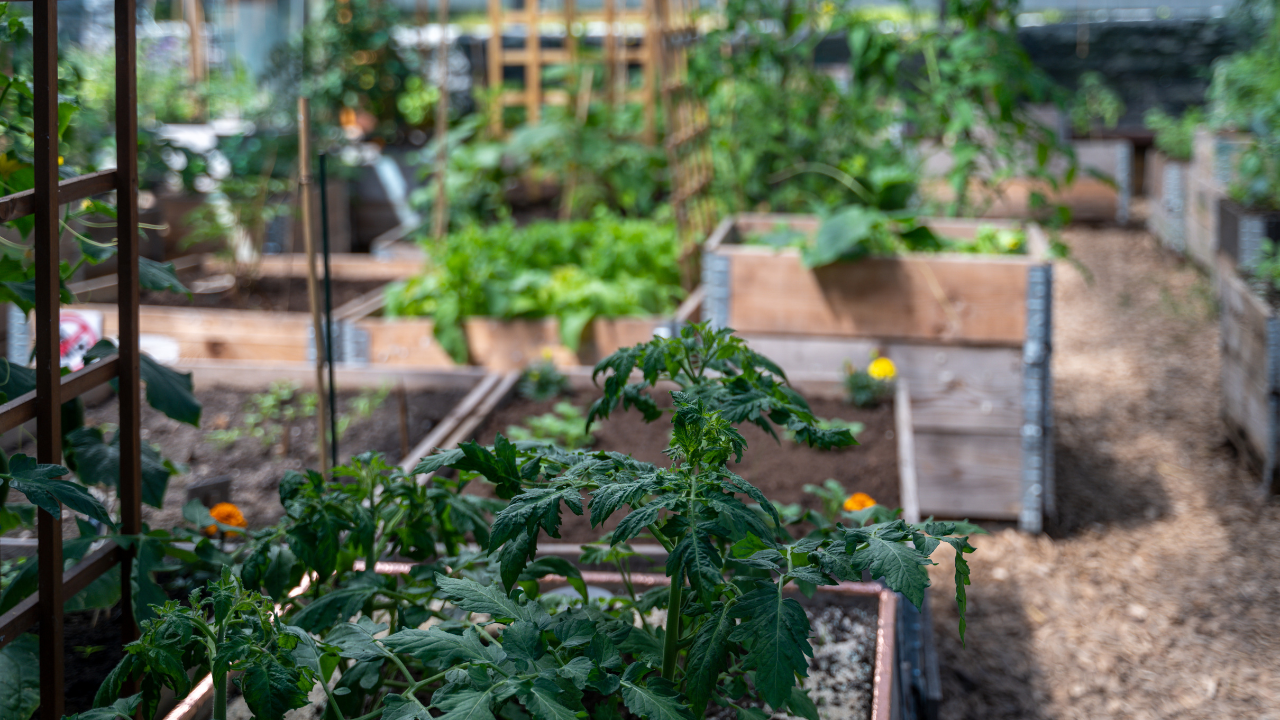Table of Contents
ToggleHow to Compost in an Urban Environment
Composting is an excellent method to minimize waste and enhance your garden, even when space is limited, as in urban settings. This guide details how to effectively compost in an urban environment, converting kitchen scraps and yard waste into nutrient-rich soil.
Understanding Composting
At its core, composting is the natural process that transforms organic waste into valuable compost through decomposition. It enriches soil, promotes healthy plant growth, and decreases landfill waste. In urban areas, where space is often restricted and gardens are limited, composting serves as an ideal sustainable practice for individuals and communities alike.
Advantages of Composting in Urban Areas
- Waste Reduction:
 Composting diverts food and yard waste from landfills, significantly decreasing the volume sent to disposal facilities.
Composting diverts food and yard waste from landfills, significantly decreasing the volume sent to disposal facilities. - Soil Enrichment: Compost returns essential nutrients to the soil, improving its texture, moisture retention, and overall health.
- Environmental Impact: Composting fosters a healthier urban ecosystem by enhancing biodiversity and reducing greenhouse gas emissions.How to Compost in an Urban Environment
How to Begin Urban Composting
1. Choosing a Method
In an urban environment, various composting methods can be tailored to your space and lifestyle. Some of these include:
- Bin Composting: Purchase a compost bin suitable for your available space. There are numerous types available, including tumblers and stationary bins. Opt for one that is well-ventilated and has proper drainage.
- Vermicomposting: This method utilizes worms to decompose organic matter. A small worm bin can easily fit under your kitchen sink or on your apartment balcony.
- Bokashi Composting: Bokashi employs a fermentation process that breaks down food waste. It works well for compact spaces and accepts a wider variety of food waste compared to traditional composting.
2. Location Selection
Select an easily accessible location for your compost bin. Consider the following:
- Convenience: Ideally, position the compost bin close to your home, near the kitchen, so you can easily add scraps.
- Shade and Sunlight: Find a spot that receives some sunlight but also has shaded areas to prevent overheating.
3. Gather Your Materials
For successful composting, you’ll need a mix of “greens” (nitrogen-rich materials) and “browns” (carbon-rich materials). Here’s what to include:
- Greens: Fruit and vegetable scraps, coffee grounds, eggshells, and grass clippings.
- Browns: Dried leaves, shredded paper, cardboard, and wood chips.
- How to Compost in an Urban Environment
Avoid adding meat, dairy, and oily foods, as they can attract pests and produce unpleasant odors.
4. Layer Your Compost
When creating your compost pile or bin, start with a layer of browns to aid drainage. Alternate layers of greens and browns, ensuring a balanced mix. The general rule of thumb is to maintain a ratio of about 2:1 browns to greens.
5. Maintaining Your Compost
Regular maintenance is crucial for a healthy compost pile. Here’s how to keep your compost in good condition:
- Turn the Pile: Every few weeks, turn your compost with a pitchfork or shovel to aerate the pile, promoting faster decomposition.
- Monitor Moisture Levels: Your compost should be moist but not waterlogged. If it feels too dry, add water; if it’s too wet, incorporate more browns.
- Check for Odors: A healthy compost pile should emit a pleasant, earthy smell. If it smells foul, this could indicate an imbalance. Add more browns and aerate the pile.
6. Troubleshooting Common Issues
Even experienced composters can face challenges. Here are some common issues and their solutions:
- Pests: If pests are attracted to your compost, ensure you’re not adding food scraps that draw them in. Close the bin and cover food waste with browns.
- Slow Decomposition: If your compost isn’t breaking down, it may be too dry, too wet, or lacking greens. Adjust your materials accordingly.
- Bad Odors: If your compost has an unpleasant smell, it may be too wet or contain too many greens. Turn the pile and add more browns.How to Compost in an Urban Environment
7. Taking Your Compost Home
After a few months, your compost will break down into dark, crumbly material resembling soil. To harvest your compost:
- Stop Adding Fresh Materials: Cease adding scraps to the bin for a few weeks to allow the compost to finish.
- Readiness Check: The compost should be dark, crumbly, and have an earthy aroma.
- Utilization: Incorporate your compost into garden beds, use it as a top dressing for potted plants, or blend it into seed starting mixes.
Urban Composting Communities
Consider joining or starting a community composting initiative in your neighborhood. Many cities offer programs and resources that provide bins, making it easier to share the benefits and efforts within the community. Local gardening clubs can also serve as a source of support and inspiration.How to Compost in an Urban Environment
Conclusion
Composting in an urban environment is not only practical but also rewarding. By composting, you produce rich compost that benefits your plants while contributing to a reduced ecological footprint. Embrace the opportunity to recycle waste into something valuable and make your urban space greener and more sustainable. Whether you have a small balcony or participate in a shared community garden, composting significantly contributes to the health of our planet while enhancing your urban experience. Start composting today and watch your urban oasis thrive!
